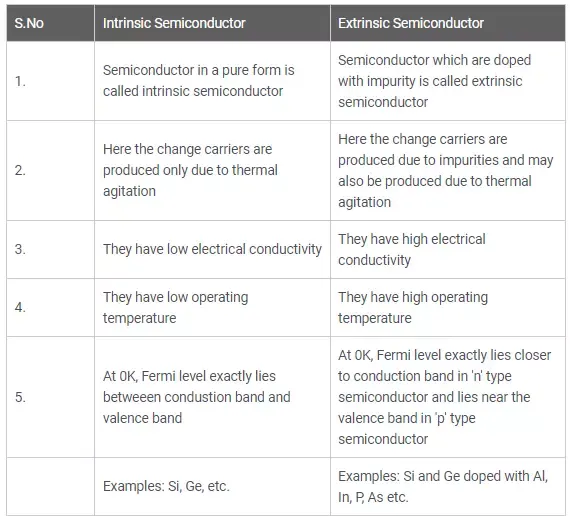What are semiconductors | Why are semiconductors used in electronics
What Is a Semiconductor?
A semiconductor is a material product usually comprised of silicon, which conducts electricity more than an insulator, such as glass, but less than a pure conductor, such as copper or aluminum.
Their conductivity and other properties can be altered with the introduction of impurities, called doping, to meet the specific needs of the electronic component in which it resides.Also known as semis, or chips, semiconductors can be found in thousands of products such as computers, smartphones, appliances, gaming hardware, and medical equipment.
What are semiconductors ?
The properties of any solid material depend upon the nature of the constituent of the atoms an upon the way in which the atoms are grouped together. Thus, the properties are functions or t atomic structures of the atoms and the crystal structure of the solid. We know that an 1s01ated atom consists of a positively charged nucleus surrounded by equal number of negatively ciau B electrons located in discrete orbits.
Definition of energy levels of the atoms ?
Actually electrons can exist in stable orbits near the nucieus only for certain discrete values of energy called energy levels of the atoms.
Even the tiniest crystal contains many hundreds of millions of atoms. When these atoms come close together to form a solid crystal, electrons in the upper levels of adjacent atoms interact to bind the atoms together. Because of the strong interaction between these outer or valence electrons, the valence electrons no more remain property of individual atoms but different atoms share them.
Definition of valence band ?
The higher, unoccupied, levels are split, so that many energy levels are associated with each nucleus and form a band of energy levels. Splitting of the valence energy levels forms the lowest energy band called the valence band.
The band is completeiy filled with electrons at very low temperature (at 0°K), because there is one electron for each of the available energy levels. The upper energy band is empty because it corresponds to the unoccupied higher levels in the isolated atom. It is
Definition of forbidden energy gap ?
The energy region between the valence band and the conduction band is called the forbidden energy gap since no electron with such energies exists in the crystal. It gives the minimum energy required to raise an electron from valence band to conduction band.
The picture of the electronic energy 1eveis in a crystal is known as the energy-band diagram of a crystal. It is very useful in determining tne electrical properties of any solid, Since it shows hoW electrons can move in the crystal. Accordingly solids are classified as: metal, semiconductor and insulator. The energy band diagrams of these three types are different as shown in Particularly, the differences between metals, semiconductors and insulators are reflected in their energy-band models.
As indicated in the atomic and crystal structures of metals are such that the valence and conduction bands overlap each other. Forbidden energy gap iS absent in a metal crystal. So the valence electrons are free to move throughout the solid in response to an electric field. Therefore, metals are excellent electric conductors.
An insulator has wide forbidden energy gap. The valence band is completely filled and the conduction band is completely empty. Obviously the upper band cannot coptribute to electric conductivity since electrons are not present to act as carriers. It is impossible for any electron in the filled valence band to be accelerated by the electric field and contribute to the current flow. The crystal is therefore an insulator.
The energy-band model of a semiconductor, is similar to that of an insulator except that the forbidden energy gap is comparatively narrow. Approximately it is of the order of one electron volt. Therefore a few electrons can be excited from valence band to the conduction band across the forbidden energy gap by virtue of the external energy. Electrons promoted to the conduction band can contribute
to the current.
The corresponding electron vacancies (normally called as holes) in the valence band can also contribute to conductivity. Thus the semiconductor starts conducting. It is clear that at very low temperature valence band remains full while the conduction band is empty. Hence these materials are insulators at low temperatures.
However, the conductivity increases with temperature. The material now turns to conductors. Such material is called as semiconductor. Germanium and Silicon are frequently used semiconductors having energy band gap of 0.785 eV and 1.21 eV respectively, at 0 °K.
What are semiconductors | Why are semiconductors used in electronics
Tags:
Basic Electronic System





